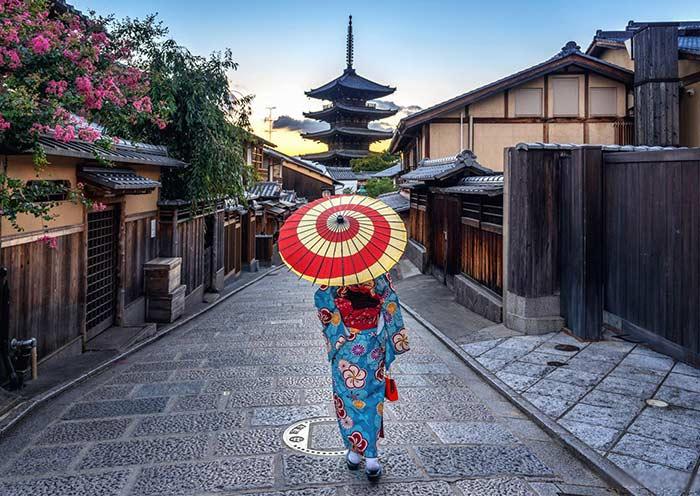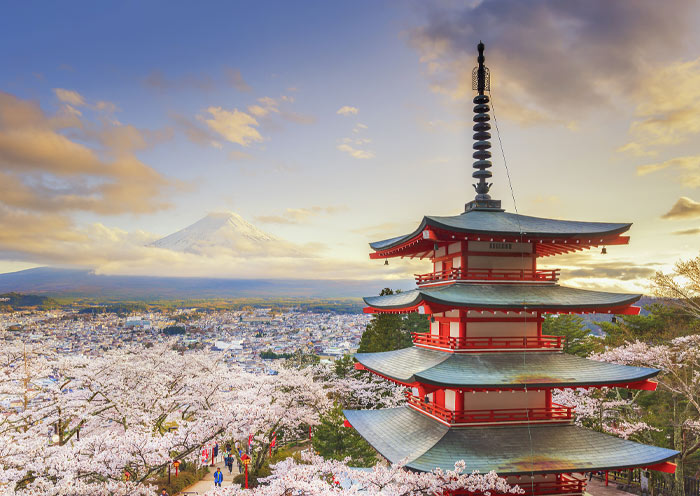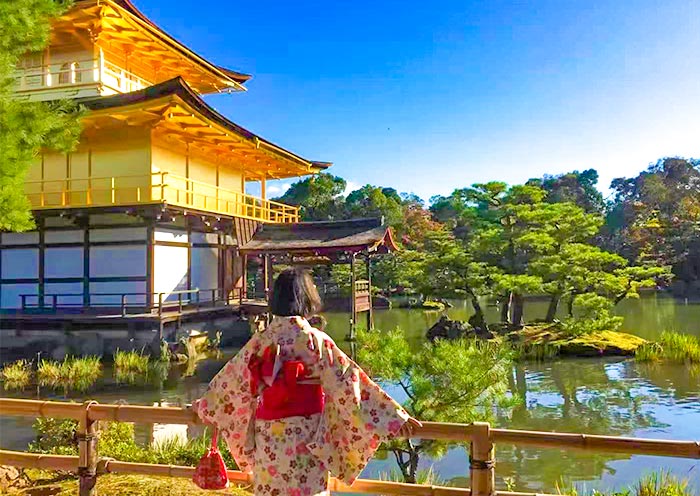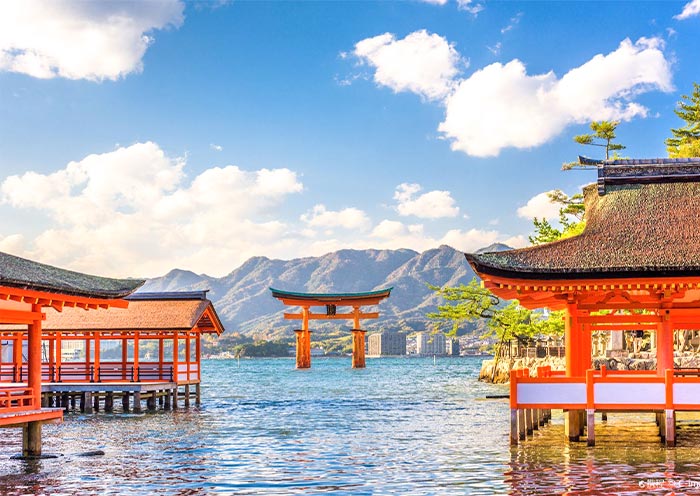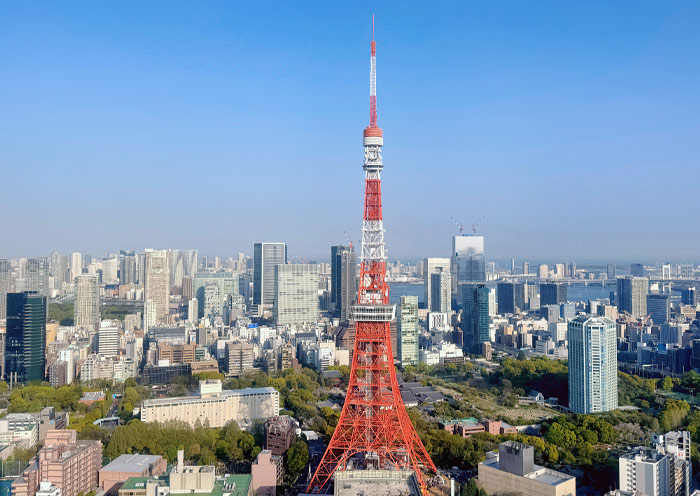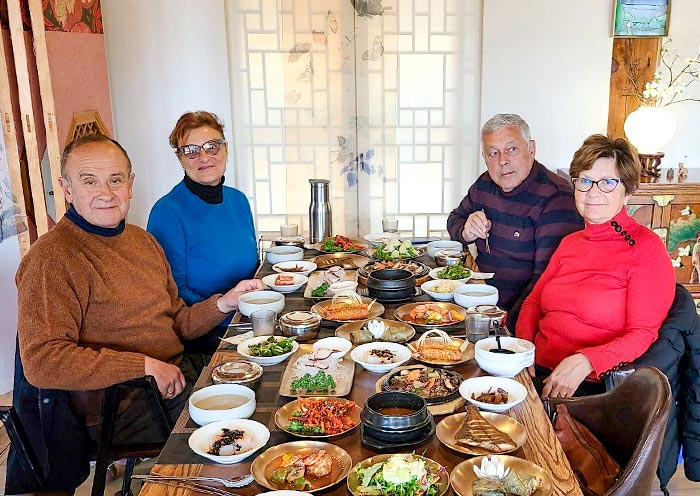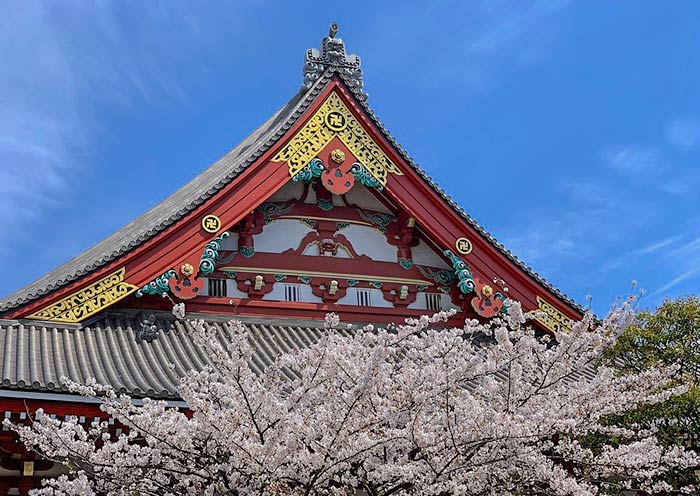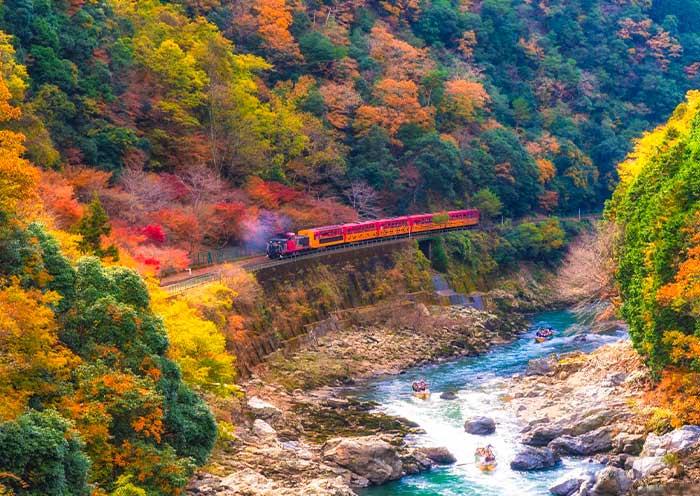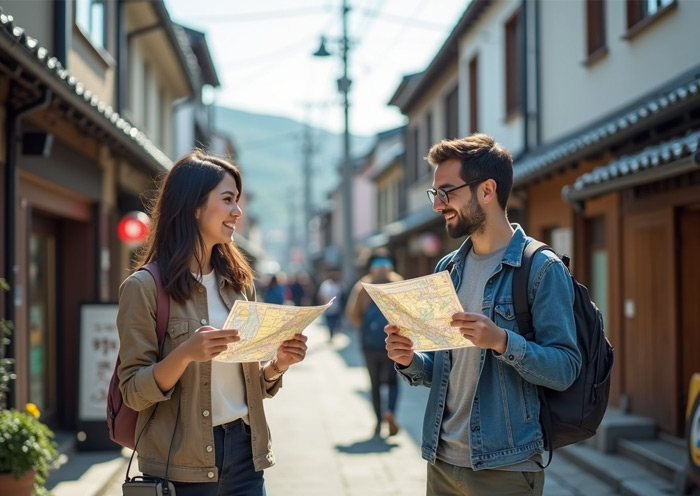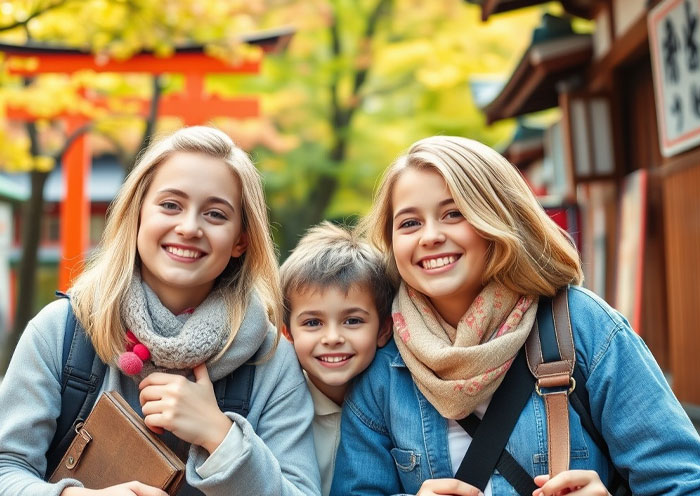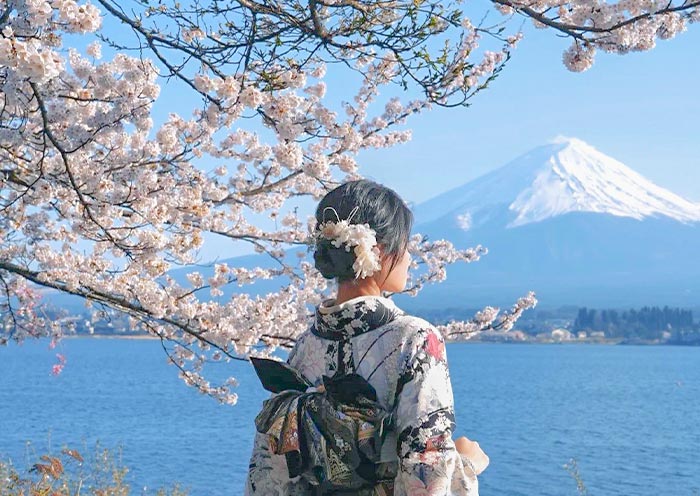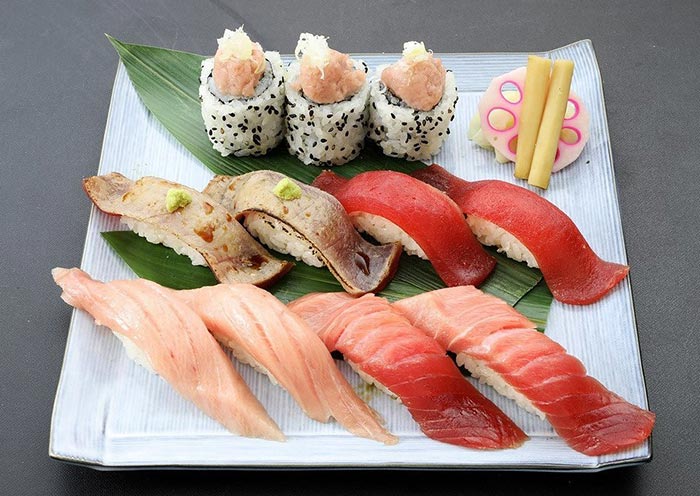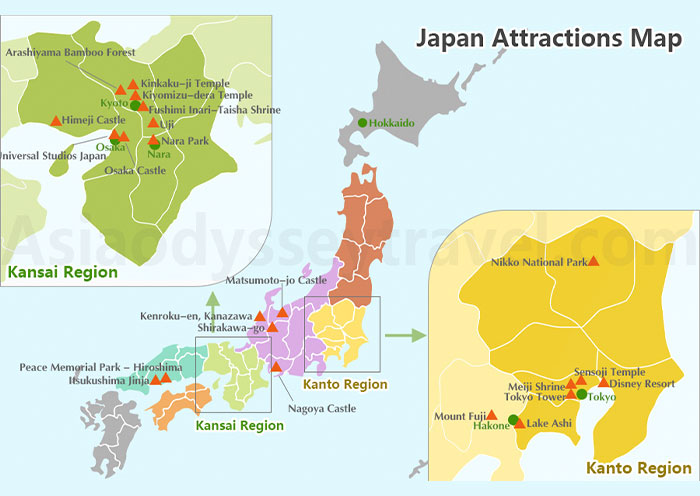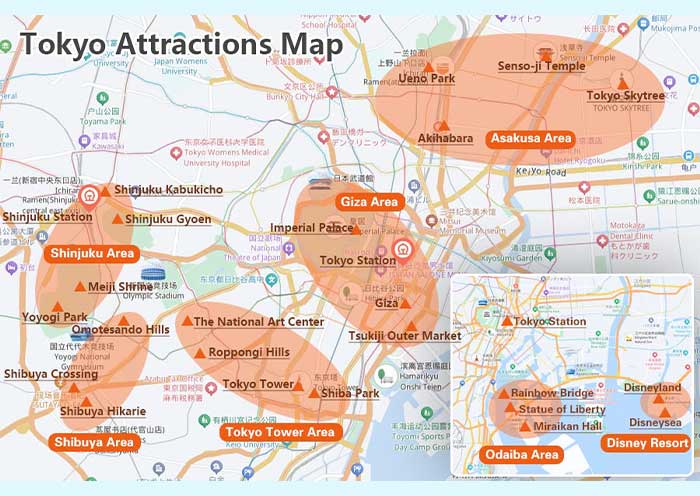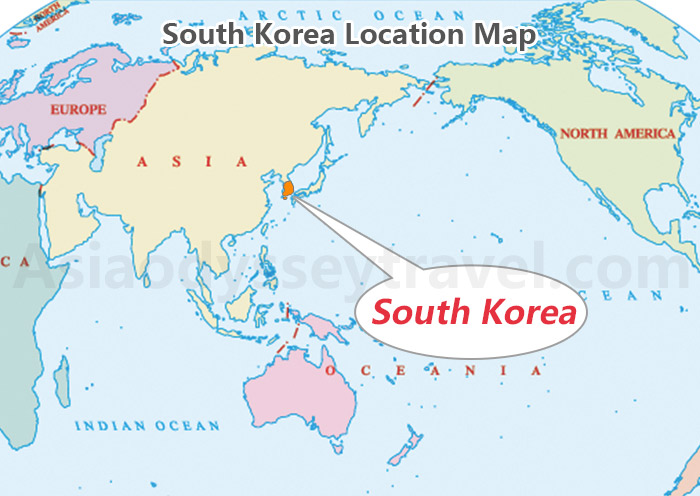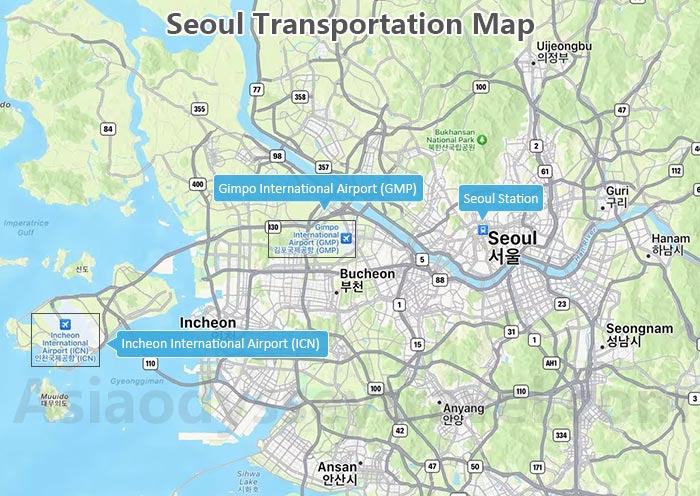Japan and South Korea Tours, 3 Japan South Korea Tours 2025/2026
✅South Korea & Japan: Your Ultimate Dual-Destination Adventure - Where Rich Traditions Meet Vibrant Modernity!
While South Korea boasts dynamic energy, Seoul's ancient palaces (Gyeongbokgung), stunning natural landscapes like Jeju Island, spicy street food (kimchi/bibimbap/tteokbokki), Korea’s jjimjilbangs, and a thriving fashion and entertainment industry (lively K-pop scene), Japan enchants you with cherry blossoms, futuristic cities like Tokyo, cutting-edge technology, Mount Fuji, Kyoto’s traditions (Temples; UNESCO Sites), Kobe’s Arima Onsen and Osaka's street food (sushi/ramen/Takoyaki). This pairing satisfies adventurers' craving for both cutting-edge culture and deep-rooted tradition.
✅Two East Asia Countries, One Unforgettable Odyssey to the Mystery Eastern Culture.
Experience the best of East Asia’s contrasts and harmony with our exclusive Japan and South Korea Tours. The two neighboring countries share cultural similarities yet offer distinctly different atmospheres, making them perfect for a combined trip. Just 2–3 hours apart by flight, this dual-country tour allows you to delve into two rich heritages without the hassle of long-haul travel. With visa-free travel for many nationalities, these two dynamic neighbors offer a quick glimpse into the charming world of Eastern countries.
✅How to Choose Japan and South Korea Tours?
First-timers: The 10-day Highlight Tour whisks you from Seoul’s buzz to Tokyo, Fuji, Kyoto, and Osaka—effortlessly blending iconic sights. Crave depth? The 16-day In-depth Discovery uncovers Gyeongju’s ancient charm, Busan’s coasts, Hiroshima’s history, and Uji’s serenity. For the ultimate adventure, the 17-day East Asia Tour adds China’s top gems—three countries, endless memories. Your story starts here!
✨Forget the stress of planning. Tailor your South Korea and Japan Tour Package with us. From cultural deep dives to culinary adventures, our tour is your shortcut to experiencing the mystery of Eastern Culture. Our locally based Asia Odyssey Travel Team (Tokyo) is your reliable friend to offer the best service and price.

"Excellent Tour, best experience"
"A unique experience despite a difficult context thanks
to an experience team of organisers"
- 3 Japan and South Korea Tours 2025/2026
- Affordable Japan Tours from South Korea (Small Group)
- Articles & Planning
3 Japan and South Korea Tours 2025/2026
From Japan's Sushi & Ramen to South Korea's Kimchi & Bibimbap, Japan & South Korea Unlocked! Our Japan South Korea Tours offer: (1) Experience a taste of South Korea and Japan with an essential itinerary for 8-10 days. (2) Explore both South Korea and Japan in greater detail with 11 to 16 days. (3) Or even 17 to 3-week trip add China to your East Asia trip. Uncover the best of East Asia with our top three Japan and South Korea Tours!
Affordable Japan Tours from South Korea (Small Group)
Discover the best of Japan from South Korea with Competitive Pricing. Our Budget-Friendly Japan Group Tours from South Korea are capped at just 16 travelers, so you’ll enjoy a friendly, relaxed experience. Stay in quality 4-star hotels, follow a well-planned itinerary to all the must-see sights. Contact the Asia Odyssey Travel (Tokyo) now, and we offer the best service and prices.
Beyond Japan and South Korea Tours
Japan South Korea Tours Planning & Useful Articles
Want to have a fast understanding about Japan and South Korea? View our latest crated articles about Japan & South Korea (with map). Check in detail, and you will know the location of each destination in South Korea & Japan, top tourist attractions, how to travel between cities. Get inspired by our guide info of Japan South Korea Tour now!
Japan South Korea Tours FAQs - Plan Your Japan South Korea Tours Worry-Free
-
 1. How long should I spend in Japan?
1. How long should I spend in Japan?
If it's your first time, a classic Golden route (7-8 Days) like Tokyo - Mt Fuji - Kyoto - Nara - Osaka is ideal.
For a shorter break (4-6 days), focus on one region, either Kanto ( Tokyo, Mt Fuji, Hakone) or Kansai ( Osaka, Kyoto, Nara).
Planning a longer holiday (10+ days)? You can add places like Hiroshima, Takayama, Kanazawa.
-
 2. Do I need a Visa to enter Japan?
2. Do I need a Visa to enter Japan?
The visa requirements for Japan depend on your nationality and the purpose of your visit. Citizens of many countries, including the United States, Canada, Australia, New Zealand, and the United Kingdom, do not need a visa for short-term stays in Japan for tourism, business, or transit. However, it's essential to check the specific visa requirements for your country before you travel. You can find this information on the official website of the Japanese Embassy or Consulate in your country.
Here are some resources to help you:
1. Ministry of Foreign Affairs of Japan: https://www.mofa.go.jp/
2. Japanese Embassy or Consulate in your country.
Please note that visa regulations can change, so it's always recommended to verify the most recent information before planning your trip. -
 3. When is the best time to visit Japan?
3. When is the best time to visit Japan?
The best time to visit Japan depends on your preferences and what you want to experience. Cherry Blossom season can be the best time to visit Japan (end march – the first week of April). This is the busiest time as well. If you wish to avoid crowds May and October are good months with pleasant weather. Mid to end November is good for Autumn colours in Japan and winter months are great for skiing in the northern part of Japan. June in Japan is the rainy season and July, August are hot and humid. However, there will always be a location to suit you regardless of the time you visit. Here's a breakdown of the seasons and what they offer:
Spring (March-May)
Pros: Beautiful Cherry Blossom season, pleasant weather, fewer crowds.
Cons: Can be expensive due to the popularity of Cherry Blossom viewing.
Summer (June-August)
Pros: Lively atmosphere, many festivals, outdoor activities.
Cons: Hot and humid, especially in major cities.
Autumn (September-November)
Pros: Comfortable weather, beautiful fall foliage, fewer crowds.
Cons: Some popular attractions may close for seasonal maintenance.
Winter (December-February)
Pros: Unique winter experiences like skiing and snowboarding, festive atmosphere.
Cons: Can be cold, especially in northern regions.
Ultimately, the best time for you to visit Japan will depend on your personal preferences. If you're looking for a more peaceful experience, consider visiting in the shoulder seasons (spring or autumn). If you don't mind crowds and want to experience the full range of Japanese culture, summer might be a good option. -
 4. What are the local annual festivals in Japan?
4. What are the local annual festivals in Japan?
Japan is known for its vibrant festivals, many of which are celebrated throughout the year. Here are some of the most popular ones that tourists often enjoy:
1. Spring Festivals: Cherry Blossom Festival (Hanami): This is one of Japan's most iconic festivals, celebrated nationwide in late March to early April. People gather under blooming Cherry trees to have picnics and enjoy the beautiful scenery.
2. Summer Festivals: Gion Festival (Kyoto): One of Japan's most famous festivals, held in July, features elaborate floats adorned with traditional decorations and geisha performances.
3. Autumn Festivals: Kanda Festival (Tokyo): Held in May and October, this festival features a grand parade with colorful floats and marching bands.
4. Winter Festivals: Sapporo Snow Festival: Held in February, this festival features massive snow sculptures, ice slides, and other winter activities.
There are countless others celebrated throughout the year in different regions of the country. It's a good idea to check the specific dates and locations of the festivals you're interested in attending before planning your trip. -
 5. Do I need to book Japan tours in advance?
5. Do I need to book Japan tours in advance? It’s recommended to book Japan Tours in advance, especially for popular tours, during peak seasons, or if you have specific dates in mind.
It’s recommended to book Japan Tours in advance, especially for popular tours, during peak seasons, or if you have specific dates in mind.
-
 6. What is a recommended itinerary for a trip to South Korea?
6. What is a recommended itinerary for a trip to South Korea?
A well-rounded itinerary for a trip to South Korea often includes stops in Seoul, Busan, Gyeongju, and Jeju Island. Here’s a sample itinerary for 7-10 days:
Day 1-3: Seoul
- Visit historical sites like Gyeongbokgung Palace and Bukchon Hanok Village. Explore Myeongdong for shopping and street food. Experience the nightlife in Hongdae or Itaewon. Take a day trip to the DMZ (Demilitarized Zone).
Day 4-5: Gyeongju
- Travel to Gyeongju (by train or bus) to explore the ancient Silla capital. Visit Bulguksa Temple, Seokguram Grotto, and Anapji Pond. Explore Tumuli Park and the royal tombs.
Day 6-7: Busan
- Head to Busan via train. Relax at Haeundae Beach or Gwangalli Beach. Visit Gamcheon Culture Village and the Jagalchi Fish Market. Enjoy coastal views at the Haedong Yonggungsa Temple.
Day 8-10: Jeju Island
- Fly to Jeju Island from Busan or Seoul. Visit natural sites like Seongsan Ilchulbong (Sunrise Peak), Jeju Folk Village, and Manjanggul Cave. Hike Hallasan Mountain or relax on Jeju’s beaches. Experience Jeju’s unique culture and local seafood.
-
 7. What are recommended travel activities in Seoul?
7. What are recommended travel activities in Seoul?
Seoul offers a mix of historical, cultural, and modern experiences. Some recommended activities include:
- Historical and Cultural Landmarks: Visit the Gyeongbokgung Palace, Changdeokgung Palace, and Jongmyo Shrine. Stroll through Bukchon Hanok Village to see traditional Korean houses. Explore the artistic district of Insadong with galleries and traditional tea houses.
- Shopping and Dining:Shop in Myeongdong for cosmetics, fashion, and street food. Explore luxury shopping in Gangnam or Dongdaemun for fashion-forward markets.
- Nature and Parks: Hike Namsan Mountain and visit the iconic N Seoul Tower for panoramic city views. Wander through Seoul Forest or take a relaxing walk along the Cheonggyecheon Stream.
- Modern Seoul: Visit Dongdaemun Design Plaza for its futuristic architecture. Experience Seoul’s vibrant nightlife in Hongdae or Itaewon.
- Day Trips: Take a half-day trip to the DMZ (Demilitarized Zone) for a glimpse into the history of the Korean peninsula.
-
 8. How is Korean food?
8. How is Korean food?
Korean cuisine is mainly based on rice, noodles, tofu, vegetables and meat, which is delicious and healthy. Traditionally, the main meal is paired with a large number of side dishes called banchan, the most popular of which is kimchi. Korean barbecue is a specialty, usually including beef, pork or chicken. These dishes are usually grilled on restaurant tables with gas or charcoal built into the center. One of the most popular dishes is galbi (beef ribs), usually marinated with spices before roasting.
-
 9. What is the best place for sightseeing in Korea?
9. What is the best place for sightseeing in Korea?
The must-visit place in Korea is the capital Seoul. Best for bars, shopping, culture and heritage, and architecture. If you are there, don't forget to visit Changdeok Palace, Gyeongbokgung Palace, Prachuap Khiri Khan Village, Seoul Tower, Lotte World and Bukhansan National Park.
-
 10. What is the best time to visit Korea?
10. What is the best time to visit Korea?
The best time to visit Korea is spring (April to June) and autumn (September to November). In these two seasons, the temperature is average, and the day is dry and sunny. In spring, the temperature is usually between 15-18 degrees Celsius, and in autumn, the average temperature is usually between 19-21 degrees Celsius.
Latest Japan South Korea Tours Reviews from Our Customers

Jess
Malaysia
Destination(s): Beijing, Xian, Shanghai, Zhangjiajie
Date of Experience: Sep 04, 2025
Tour Customized by: Yee
You May be Interested in This Tour: 26 Days In-Depth Vietnam China Japan Tour: Ultimate Asia Contrast

Claudia Konrado
Brazil
That’s when a friend recommended Asia Odyssey Travel (AOT), and it was the best decision we made! Not only did they completely customize our entire trip, but they did so at a perfectly reasonable cost. Our travel agent, Abby, was absolutely incredible. She worked tirelessly with us to build out an itinerary, patiently answering all our questions, offering guidance, making changes, and adding new ideas with such care and professionalism. From Disney and Universal for the teens to visits to TeamLab Planets, museums and temples and shopping excursions, ending with a relaxing beach time in Okinawa, Abby worked with us and ensured there was something wonderful for everyone. Even during the trip, she was always available to help and provide support. I truly can’t express how much Abby made a difference in our experience. The entire team at AOT, from the guides to the drivers, was consistently helpful and attentive, ensuring every moment of our journey was smooth and enjoyable. We are so grateful for the wonderful memories created, all thanks to the dedication and expertise of AOT team. We highly recommend them for an exceptional travel experience.
Date of Experience: Jul 01, 2025
Tour Customized by: Abby
You May be Interested in This Tour: Customized Tour

Cheers
Britain
I’m so glad we chose to do this tour! We were looking for a way to escape the summer heat, and Hokkaido was a dream come true. The air was so fresh and the scenery was just incredible—I swear my photos don’t even do it justice.
The highlight for me was definitely the lavender fields in Furano. They were even more beautiful in person than in all the pictures you see online. Our private guide knew the best spots to get a great view without fighting the crowds. Plus, we got to see all the other rainbow flower fields in Biei which were just as amazing.
The trip was super relaxing because we didn't have to worry about a thing. Our driver was so professional, and it was a huge relief to have a private car just for our family. It made getting between all the different towns so easy. We loved exploring the charming canal in Otaru and getting to eat all the fresh seafood in Sapporo. The food in Hokkaido is seriously on another level!
Date of Experience: Jun 10, 2025
Tour Customized by: Cheers
You May be Interested in This Tour: 8 Days Hokkaido Summer Tour: Colorful Family Vacation on Hokkaido Island
- United States (+1)
- Australia (+61)
- Singapore (+65)
- Malaysia (+60)
- Philippines (+63)
- Canada (+1)
- Italy (+39)
- Indonesia (+62)
- United Kingdom (+44)
- Spain (+34)
- Mexico (+52)
- Hong Kong (+852)
- Thailand (+66)
- United Arab Emirates (+971)
- New Zealand (+64)
- South Africa (+27)
- Germany (+49)
- Brazil (+55)
- India (+91)
- France (+33)
- Vietnam (+84)
- The Netherlands (+31)
- Saudi Arabia (+966)
- Ireland (+353)
- Argentina (+54)
- Switzerland (+41)
- Romania (+40)
- Pakistan (+92)
- Japan (+81)
- Portugal (+351)
- Bangladesh (+880)
- South Korea (+82)
- Puerto Rico (+1)
- Türkiye (+90)
- China (+86)
- Belgium (+32)
- Qatar (+974)
- Greece (+30)
- Taiwan (+886)
- Austria (+43)
- Poland (+48)
- Israel (+972)
- Chile (+56)
- Sri Lanka (+94)
- Nigeria (+234)
- Peru (+51)
- Colombia (+57)
- Hungary (+36)
- Nepal (+977)
- Denmark (+45)
- Bulgaria (+359)
- Norway (+47)
- Slovenia (+383)
- Sweden (+46)
- Kuwait (+965)
- Costa Rica (+506)
- Ecuador (+593)
- Venezuela (+58)
- Malta (+356)
- Croatia (+385)
- Tunisia (+216)
- Czechia (+420)
- Mongolia (+976)
- Bahrain (+973)
- Mauritius (+230)
- Papua New Guinea (+675)
- Cambodia (+855)
- Dominican Republic (+1)
- Luxembourg (+352)
- Finland (+358)
- Guatemala (+502)
- Myanmar (+95)
- Maldives (+960)
- Slovakia (+421)
- Laos (+856)
- Serbia (+381)
- Brunei (+673)
- Oman (+968)
- Macao (+853)
- Panama (+507)
- Morocco (+212)
- Jordan (+962)
- Georgia (+995)
- Fiji (+679)
- Bolivia (+591)
- Lithuania (+370)
- Bahamas (+1)
- Cyprus (+357)
- Latvia (+371)
- Bhutan (+975)
- Iraq (+964)
- Iran (+98)
- Kenya (+254)
- Jamaica (+1)
- Zimbabwe (+263)
- Azerbaijan (+994)
- Uruguay (+598)
- Estonia (+372)
- Andorra (+376)
- Cameroon (+237)
- Ghana (+233)
- Kazakhstan (+7)
- Nicaragua (+505)
- Egypt (+20)
- Russia (+7)
- Albania (+355)
- Réunion (+262)
- Montenegro (+382)
- Algeria (+213)
- Afghanistan (+93)
- Martinique (+596)
- Uganda (+256)
- Honduras (+504)
- North Macedonia (+389)
- Trinidad and Tobago (+1)
- Suriname (+597)
- Antigua and Barbuda (+1)
- Zambia (+260)
- Ukraine (+380)
- Armenia (+374)
- Barbados (+1)
- Belarus (+375)
- Palestine (+970)
- Lesotho (+266)
- Moldova (+373)
- Ethiopia (+251)
- French Polynesia (+689)
- Gambia (+220)
- Guam (+1)
- Gibraltar (+350)
- Isle of Man (+44)
- New Caledonia (+687)
- El Salvador (+503)
- Comoros (+269)
- Seychelles (+248)
- Chad (+235)
- Samoa (+685)
- Cook Islands (+682)
- Palau (+680)
- Paraguay (+595)
- DR Congo (+243)
- Solomon Islands (+677)


